A vehicle’s cooling system is one of the most crucial yet overlooked components of long-term reliability.
Whether you’re navigating stop-and-go traffic or enduring long highway drives, the cooling system ensures the engine stays within optimal temperature ranges, protecting it from overheating and severe damage.
While most systems include radiators, thermostats, water pumps, and hoses, their performance over time varies greatly across makes and models.
Some cars are engineered with robust cooling systems that can function for over a decade with minimal maintenance—offering peace of mind to owners and reducing the likelihood of costly repairs.
These well-designed systems often feature superior materials, intelligent thermal management, and easy-to-service layouts that support long-term reliability.
On the other end of the spectrum are vehicles notorious for hose bursts, frequent coolant leaks, or premature water pump failures. These problems not only lead to repeated trips to the mechanic but also pose a serious threat to the engine’s health if left unchecked.
In this article, we explore two extremes: five vehicles with exceptionally durable cooling systems that can last 10 years, and five where poor component quality or design flaws lead to constant hose-related issues.
Knowing which cars fall into each category can help buyers make smarter, long-term decisions.
Also Read: 5 Cars That Break Right After Warranty and 5 That Keep Going Forever
5 Cooling Systems That Last 10 Years
When evaluating long-term vehicle ownership, it’s easy to focus on engine durability, transmission longevity, or even corrosion resistance. But an often-undervalued factor in long-term reliability is the cooling system.
A well-engineered cooling system doesn’t just prevent overheating—it quietly protects nearly every moving part of the engine.
For drivers keeping their cars for 10 years or longer, a dependable cooling system can mean the difference between smooth ownership and mounting repair bills.
The vehicles highlighted in this section stand out because their cooling systems have proven to hold up exceptionally well over time.
Whether due to high-quality hoses and clamps, leak-free radiators, or thermostats that don’t randomly fail, these systems remain intact with only basic maintenance like coolant changes.
Importantly, these vehicles are not immune to wear, but the likelihood of failures such as cracked hoses, warped water pumps, or gasket leaks remains extremely low well into high-mileage territory.
These cars are frequently praised by mechanics and long-term owners alike for needing few if any cooling system repairs in the first decade of service.
Their designs prioritize accessibility for future maintenance, resistance to thermal stress, and materials that don’t degrade easily—factors that together enable a solid 10 years of use with no catastrophic surprises.
Whether you’re a commuter racking up miles or someone who simply wants to avoid cooling-related breakdowns in year eight of ownership, this list highlights cars that give owners confidence.
We’ve chosen these vehicles based on real-world reliability data, common mechanic feedback, and long-term ownership reports.
Now, let’s look at five specific models with cooling systems so well-built, they can often last a decade or more with little more than routine coolant flushes.
1. Toyota Camry (2012–2017)
The 2012–2017 Toyota Camry stands out as one of the most dependable sedans of the last decade, and its cooling system is a major contributor to that reputation.
Owners who have driven these cars past 150,000 miles without a single hose replacement or coolant leak often remark on how little attention the system requires beyond basic fluid checks.
The Camry’s cooling system is a textbook example of thoughtful engineering meeting high production standards.
Toyota designed the Camry’s cooling system with longevity in mind. The radiator is positioned for optimal airflow and heat dissipation, while the hoses are made from thick, high-quality rubber that resists cracking even after years of exposure to engine heat.
The water pump, a known failure point in many cars after 100,000 miles, holds up particularly well in this generation. Many owners don’t need to replace it until the timing belt or chain service interval, if at all.
One reason for this reliability is that the Camry doesn’t overcomplicate its thermal regulation. It avoids unnecessary complexity, such as auxiliary electric pumps or convoluted coolant routing that adds failure points.
Instead, the system relies on a conventional but refined design that balances performance and ease of service.

Even if a hose or clamp does eventually need attention, the layout allows easy access, reducing labor costs and downtime.
Mechanics consistently report very few cooling-related issues in these Camrys, and many note that overheating problems are almost always due to lack of maintenance rather than design flaws.
Routine coolant flushes every 100,000 miles (Toyota Super Long Life coolant is rated for long intervals) are typically enough to keep everything running smoothly.
If you’re looking for a midsize car with a cooling system that can go the distance—often a full decade or longer—the 2012–2017 Toyota Camry is about as bulletproof as they come.
2. Honda CR-V (2013–2018)
The 2013–2018 Honda CR-V is a compact SUV that consistently earns praise for long-term durability, and its cooling system plays a critical role in that reputation.
Owners frequently report driving well past 120,000 miles without needing to replace hoses, thermostats, or even the radiator. It’s a vehicle designed to quietly keep working, year after year, with few surprises under the hood.
Honda’s engineering philosophy during this generation focused on mechanical simplicity and practical reliability. The CR-V’s 2.4-liter i-VTEC engine uses a conventional yet refined cooling system that doesn’t rely on overly complex components.
With a straightforward radiator layout and thick rubber coolant hoses routed away from major heat sources, the system is designed to minimize stress and wear.
Where many crossovers suffer from prematurely brittle hoses or low-quality plastic fittings, the CR-V holds up well over time. The radiator cap seals effectively even in extreme temperature swings, and the coolant reservoir is made of thick, crack-resistant plastic.
Unlike other vehicles where the thermostat or water pump might fail early, CR-V owners typically don’t face those issues until well beyond the 150,000-mile mark, if at all.
Honda also made it relatively easy to service the cooling system when necessary. The water pump and thermostat are accessible without removing major components, and there’s enough clearance in the engine bay to inspect hoses and clamps visually.

This ease of maintenance means any preventative work can be done quickly, reducing the likelihood of neglected problems turning into failures.
The CR-V’s use of Honda Type 2 coolant also contributes to the system’s longevity. This long-life fluid is formulated to resist corrosion and buildup, meaning flush intervals are extended and internal components stay clean and functional. As long as owners stick to the basic maintenance schedule, this cooling system rarely gives trouble.
For anyone seeking a family-friendly vehicle that won’t surprise them with cooling issues in year nine of ownership, the 2013–2018 Honda CR-V offers peace of mind in a highly reliable package.
3. Lexus RX 350 (2010–2015)
The 2010–2015 Lexus RX 350 is a luxury midsize SUV known for offering high-end comfort with Toyota-grade reliability—and one of the key unsung heroes behind its low-maintenance ownership experience is its cooling system.
While luxury vehicles often introduce added complexity that shortens component lifespan, the RX 350 bucks the trend by offering a system that’s not only efficient but built to last for a decade or more with minimal intervention.
The RX 350’s 3.5-liter V6 is equipped with a durable water pump, premium radiator, and robust rubber hoses that show very few signs of deterioration even after 100,000 miles.
Unlike some luxury vehicles that use plastic hose connectors or composite thermostat housings that become brittle, Lexus stuck to tried-and-true materials that hold up well in long-term use. This decision helps prevent common failures like coolant leaks, warped thermostat covers, or unexpected pressure bursts in the hoses.
A significant reason for the RX 350’s reputation in this area is Toyota’s overall engineering discipline. Many internal cooling passages are overbuilt rather than cut to minimum spec, which allows coolant to flow more evenly and without pressure spikes.
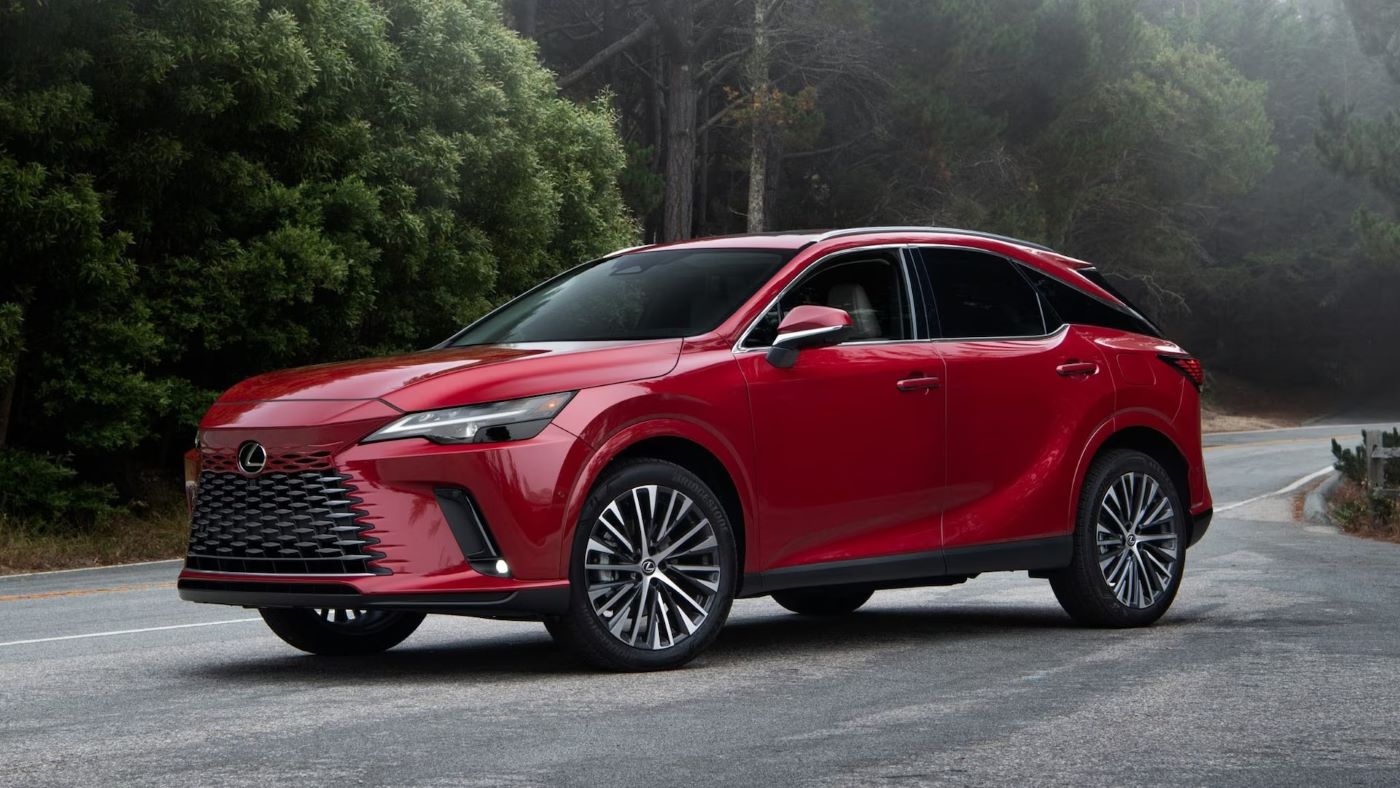
Even the radiator fans and temperature sensors exhibit lasting performance, with few reports of electric motor failure or inaccurate readings that could lead to overheating.
Another benefit is the accessibility of the cooling system. Despite being a luxury SUV, the engine bay isn’t overly cramped. This makes regular maintenance—like checking coolant levels or inspecting hoses—far easier than in similarly sized European rivals.
And because the RX 350 uses Toyota Super Long Life coolant, flush intervals can stretch to 100,000 miles without worry, as long as no leaks or contamination occur.
Mechanics who service these vehicles routinely report seeing RX 350s with original water pumps and radiator assemblies even after a decade on the road. When cooling system issues do arise, it’s almost always from deferred maintenance, not design flaws.
If you’re looking for a luxury SUV that can deliver smooth, worry-free ownership through ten years or more, the RX 350 offers one of the most bulletproof cooling systems in its class.
4. Subaru Outback (2015–2019)
The 2015–2019 Subaru Outback is a standout not only for its all-weather capability and spacious interior but also for its durable, low-maintenance cooling system—especially when equipped with the 2.5-liter naturally aspirated Boxer engine.
While some earlier Subarus had reputational issues with head gasket leaks, Subaru addressed those concerns by the time this generation debuted, and the result is a cooling system that has proven capable of running 10 years or more with minimal upkeep.
One of the key strengths of the Outback’s cooling system is its robust construction. The radiator, upper and lower hoses, and thermostat housing are made of high-quality materials, and the layout of the horizontally opposed engine actually helps distribute heat evenly.
Subaru also improved gasket sealing compounds in this generation, reducing the likelihood of seepage that plagued earlier models.
What sets this system apart is how well it handles long-term thermal stress. Whether you’re in the snow-heavy regions of the Northeast or the hot deserts of the Southwest, the Outback’s system adapts well to extreme climates.
The water pump is especially long-lasting, with many owners reporting original pumps still functioning past 150,000 miles. Radiator fans are electronically controlled and rarely suffer motor burnout thanks to smart thermal regulation.
Routine coolant flushes are made easier thanks to the accessible reservoir and overflow tank. Subaru uses a long-life blue coolant with corrosion inhibitors that reduce scale buildup inside the radiator and heater core, further extending component life.

Hoses retain flexibility even after years of heat cycling—an impressive feat for a vehicle that’s often used for outdoor recreation and long highway trips.
Owners who have kept their 2015–2019 Outbacks for the long haul often point out how infrequently they’ve had to worry about overheating or pressure issues.
For a car that’s commonly taken on cross-country trips or driven through variable terrain, that’s a strong endorsement of its cooling system.
If you’re looking for a reliable crossover that handles cooling duties as effortlessly as it handles snow and gravel, the 2015–2019 Subaru Outback deserves a place on your shortlist.
5. Mazda MX-5 Miata (2016–2022)
The Mazda MX-5 Miata, particularly from the 2016–2022 ND generation, is best known for its lightweight, fun-to-drive nature—but under the hood lies another underappreciated strength: an exceptionally reliable cooling system.
Designed for spirited driving and frequent high-revving, the Miata’s thermal management is not only precise but remarkably durable over long periods.
Owners and enthusiasts routinely note that even with aggressive driving styles, the cooling system remains rock-solid for a decade or more with minimal issues.
One major contributor to this longevity is the Miata’s 2.0-liter Skyactiv-G engine, which runs cool relative to its output and has very efficient thermal distribution. Mazda engineered the cooling system to support performance without sacrificing everyday usability.
This includes a well-sized aluminum radiator, strong silicone-reinforced hoses, and a water pump that’s rated for high mileage without internal degradation.
The simplicity of the system works in its favor. There are no overly complex bypasses or auxiliary electric pumps to fail, and the thermostat is housed in a traditional location that’s easy to reach if service is needed.
Even after 100,000 miles, many Miatas still run with their original hoses and radiator, and leak issues are extremely rare.
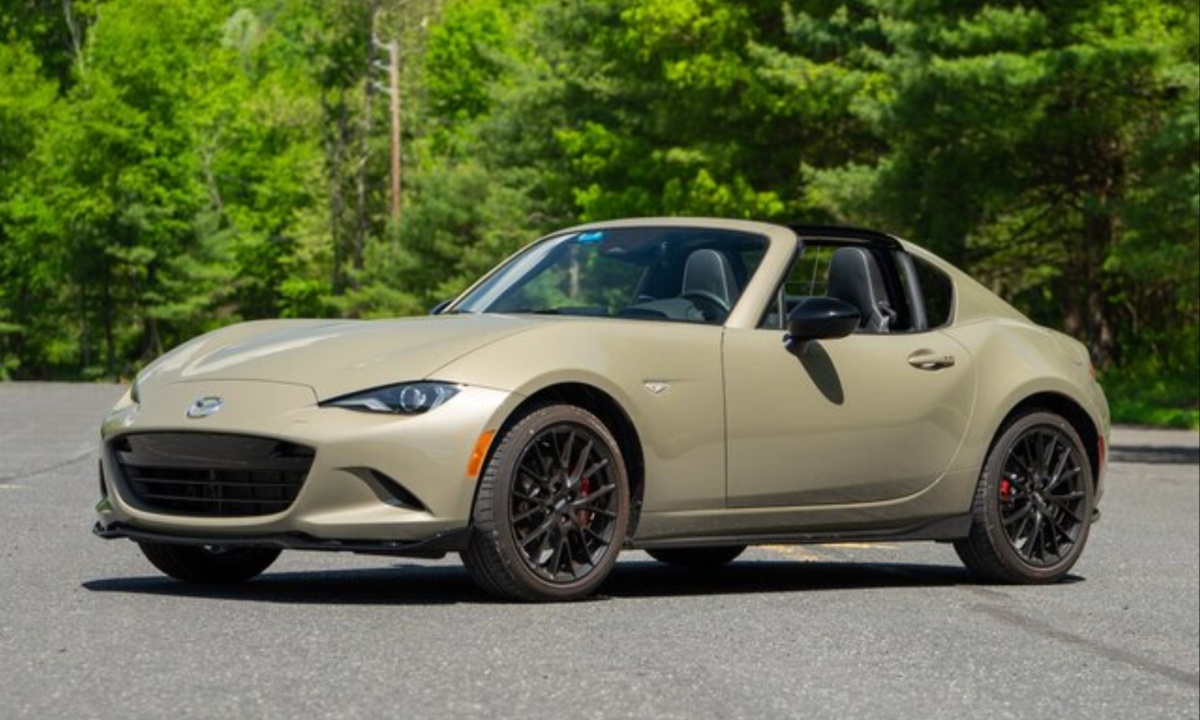
In fact, some long-term owners note their vehicles have never experienced a coolant loss or overheating incident despite autocross sessions or extended summer road trips.
Mazda also positioned the reservoir tank in a clearly visible and accessible location, making it simple for owners to monitor coolant levels. The use of long-life FL22 coolant extends service intervals and protects internal engine components from corrosion or scaling, adding another layer of assurance.
Mechanics who service Miatas regularly tend to report low failure rates on water pumps, radiator fans, and hoses—even on high-mileage units. Combined with a relatively low total coolant volume, the system is inexpensive to maintain and inspect.
For driving enthusiasts or commuters alike, the ND Miata’s cooling system exemplifies reliability without complexity. It’s a strong match for those who want a low-maintenance, high-enjoyment car that doesn’t sneak up with repair surprises years down the line.
5 Cooling Systems With Constant Hose Bursts
Not all cooling systems are created equal—and for some vehicle owners, this truth becomes painfully clear every time they’re left stranded by a blown radiator hose or an unexpected coolant geyser under the hood.
While modern vehicles have largely improved their thermal management systems, certain models continue to suffer from recurring issues with premature hose wear, brittle plastic fittings, and over-pressurized systems that lead to frequent failures.
In many cases, these issues don’t stem from neglect but from flawed design, poor material choices, or heat retention problems that accelerate the aging of key cooling components.
This section focuses on five vehicles that have become notorious for constant hose-related failures.
Whether it’s due to the use of inferior rubber compounds, cramped engine bays that trap excess heat, or cooling layouts with too many stress points, these models have frustrated owners with an ongoing need to replace hoses—sometimes as often as every 40,000 to 60,000 miles.
What’s more frustrating is that many of these failures happen without warning, sometimes even after the cooling system has been recently flushed or serviced.
For some cars on this list, the hose bursts are compounded by the presence of plastic Y-connectors, T-fittings, or heater core couplings that crack under pressure.
Others suffer from radiators mounted too close to high-heat components, creating a perfect storm of rubber fatigue and thermal cycling.
These design shortcomings not only increase maintenance costs but also raise the risk of engine overheating and long-term damage if the issue isn’t addressed quickly.
In this section, we’ll break down five specific vehicles that exemplify how hose problems can plague ownership.
From premium SUVs to everyday sedans, these are the cars where the cooling system can become a chronic headache—regardless of how careful or consistent the owner is with maintenance.
1. BMW X5 (2007–2013, E70 Generation)
The BMW X5 from the 2007–2013 E70 generation is a midsize luxury SUV that offers sporty handling and premium features—but owners quickly learn that its cooling system is a frequent source of mechanical drama, especially due to constant hose failures.
Despite the brand’s reputation for performance engineering, the E70’s cooling setup is overly complex and riddled with weak points that manifest as recurring hose bursts, often without warning.
The E70 uses a combination of plastic Y-connectors, quick-connect fittings, and multiple rubber hoses that are routed tightly around high-heat zones. While this design might save space and weight, it dramatically reduces long-term durability.
The upper radiator hose is especially failure-prone, often developing hairline cracks near the connector flange.
Even more frustrating is the use of plastic bleeder screws and neck fittings on the expansion tank—components that become brittle with age and can rupture under normal operating pressure.

Owners commonly report needing to replace major hose assemblies every 50,000 to 70,000 miles, even with regular coolant flushes. The problem is exacerbated by the X5’s tightly packed engine bay, which traps heat and accelerates rubber degradation.
Once one hose fails, others often follow in a chain reaction. Many drivers also experience coolant loss without obvious external leaks, only to discover internal cracks or pinhole leaks hidden in molded hose sections.
In some variants, especially the V8 models, the water pump and thermostat are also mounted in tight quarters, adding heat load to an already stressed system.
Over time, this leads to premature failure of nearby hoses due to constant exposure to radiant engine heat and vibration.
For DIY owners, the repair process can be labor-intensive, requiring removal of multiple engine components just to reach basic fittings.
While aftermarket upgrades like silicone hoses and aluminum connectors can mitigate these problems, most buyers aren’t expecting to spend hundreds (or thousands) of dollars on cooling system rebuilds in the first decade of ownership.
For anyone looking at a used E70 X5, the cooling system’s reputation should be a major consideration.
2. Chrysler 200 (2011–2014)
The Chrysler 200 sedan from 2011 to 2014 was marketed as a refined successor to the Sebring, but while it featured a refreshed exterior and updated interior, its cooling system left much to be desired—especially in models equipped with the 2.4-liter inline-4 engine.
One of the most persistent issues with this generation of the 200 is the frequent bursting of radiator and heater hoses, often at shockingly low mileage intervals.
The problem stems from a combination of poor component quality and subpar routing within the engine bay.
The rubber hoses used from the factory are known to degrade prematurely, especially the upper radiator hose and the heater core inlet hose, both of which are exposed to high heat without adequate shielding.
The engine’s layout creates hot spots that put uneven pressure on these components, and over time, the constant temperature cycling causes the rubber to harden, crack, and eventually rupture—sometimes suddenly and without visible warning.
To make matters worse, the Chrysler 200 uses plastic connectors for many of its hose junctions. These are notorious for becoming brittle, particularly in warm climates, and they often fail simultaneously with the hoses themselves.
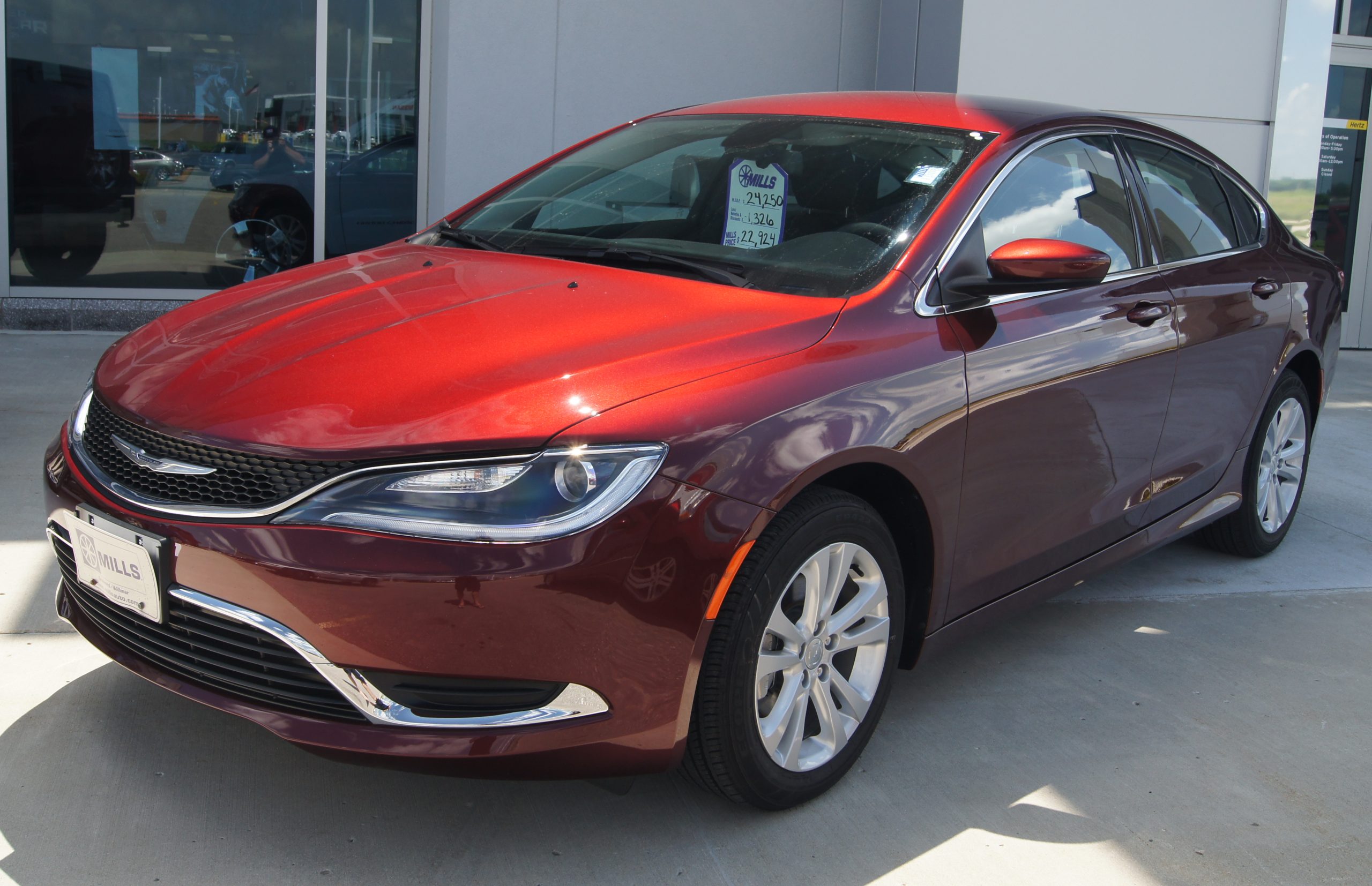
The result is a vehicle that, even when properly maintained, can experience recurring cooling system failures that undermine confidence and drive up repair costs.
Mechanics frequently report customers coming in for a coolant leak diagnosis, only to discover that a simple hose replacement turns into a full replacement of the radiator, reservoir, or thermostat housing due to interlinked plastic parts cracking under pressure.
Replacing the hoses is also more time-consuming than it should be due to tight clearances, especially in the 200’s compact engine bay.
Despite being positioned as an affordable and reliable midsize sedan, the Chrysler 200’s cooling system issues make it a high-risk option for buyers focused on long-term ownership.
Without proactive replacement of hoses and connectors every 40,000 to 60,000 miles, there’s a strong chance of unexpected roadside overheating—something no owner wants to deal with.
3. Ford Escape (2013–2016)
The third vehicle infamous for constant cooling hose failures is the 2013–2016 Ford Escape, particularly those equipped with the 1.6L and 2.0L EcoBoost engines.
These models are popular compact SUVs known for their turbocharged powertrains and fuel efficiency, but their cooling systems have a recurring issue that plagues many owners: hoses that burst or develop leaks prematurely.
Ford’s design incorporates several rubber hoses in tight engine compartments, often routed near turbocharger components that generate extreme heat. The proximity to these hot parts significantly accelerates rubber degradation.
The upper radiator hose, heater core hoses, and bypass hoses are especially vulnerable, frequently showing cracks or swelling after only 40,000 to 60,000 miles, far earlier than expected for well-maintained cooling systems.

Another aggravating factor is the use of plastic connectors and composite fittings throughout the Escape’s cooling circuit.
These plastic parts tend to become brittle with age and heat exposure, sometimes cracking and causing coolant leaks that are difficult to diagnose. Owners often report coolant loss without visible puddles, leading to overheating risks and costly emergency repairs.
Additionally, the water pump and thermostat housing share tight mounting locations, contributing to uneven thermal loads on hoses and fittings.
Turbocharged engines produce higher coolant temperatures, and any small weakness in hoses or clamps quickly escalates into system failures. Many Escape owners have experienced repeated hose replacements, sometimes multiple times within a few years, which is both inconvenient and costly.
While some aftermarket silicone hoses have improved durability, the factory setup leaves much to be desired.
Repair shops frequently note that the cooling system is one of the Escape’s most troublesome maintenance areas, with common warranty claims and extended repairs due to hose ruptures.
For buyers considering a used Ford Escape in this generation, understanding the cooling system’s weak points can help avoid surprise breakdowns and expenses.
Regular inspection and proactive hose replacement are critical to keeping this SUV on the road without coolant system drama.
4. Jeep Grand Cherokee (2011–2013, WK2 Generation)
The 2011–2013 Jeep Grand Cherokee WK2 generation is well-regarded for its rugged capability and luxurious features, but its cooling system, especially in models with the 3.6-liter Pentastar V6, has developed a reputation for frequent hose failures.
Owners often face repeated hose bursts and coolant leaks that stem from design shortcomings and material choices.
One of the biggest challenges in the WK2’s cooling system is the use of rubber hoses routed close to hot exhaust components and turbochargers (in some diesel or high-output versions).
This heat exposure causes premature hardening and cracking, particularly in the upper radiator hose and heater core hoses. The confined engine bay leaves little room for airflow to cool these parts, accelerating their deterioration.
Additionally, Jeep’s choice of plastic fittings and composite hose connectors further undermines the system’s longevity. These components tend to become brittle after just a few years, especially in areas exposed to engine heat and vibration.
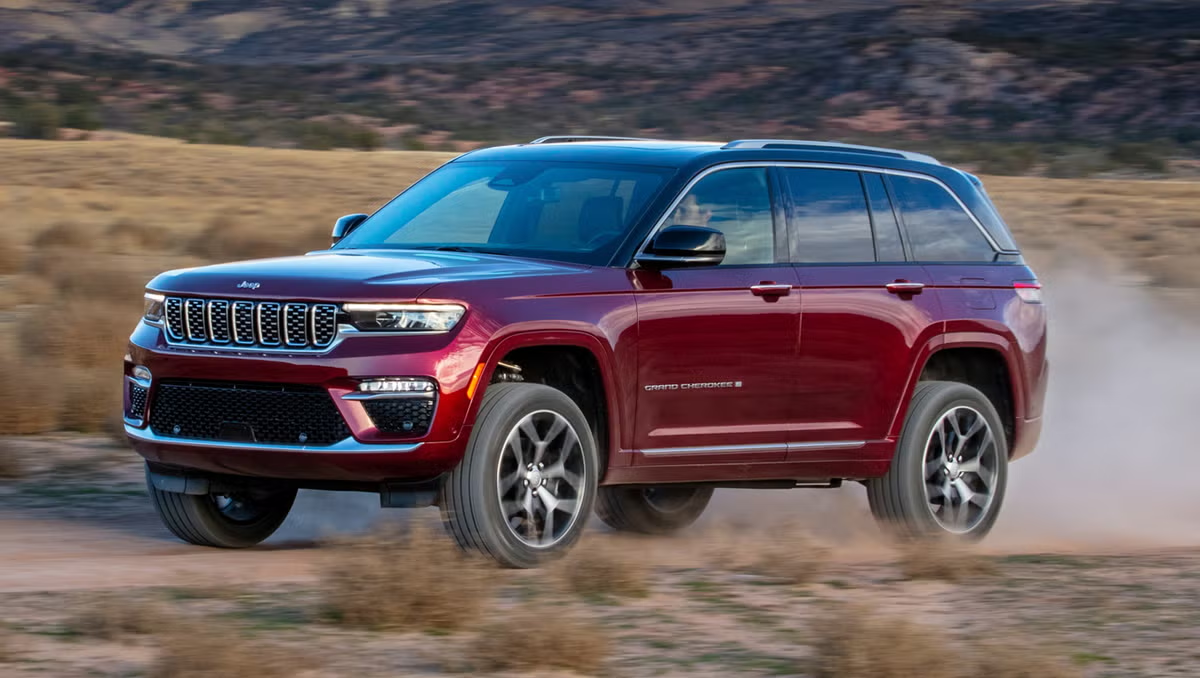
The hoses themselves are often molded with weak points near the bends or connector ends, where cracks commonly initiate.
Owners report that hose bursts can occur suddenly, sometimes without any prior coolant loss symptoms, leading to unexpected overheating or even engine damage if not addressed immediately.
Replacing hoses is also made more challenging due to the dense packaging of the engine bay and the need to remove other components for access.
While regular maintenance and coolant flushes are essential, they often don’t prevent hose failures in the WK2.
Many owners turn to aftermarket silicone hoses or upgraded OEM parts to mitigate these recurring issues, but this represents an additional expense beyond typical maintenance.
For those considering a used Jeep Grand Cherokee of this era, it’s important to understand the cooling system’s vulnerability. Frequent hose failures can turn into an expensive headache, detracting from the vehicle’s overall reliability and ownership satisfaction.
5. Nissan Altima (2013–2018, L32 Generation, 2.5L and 3.5L Engines)
The Nissan Altima from the 2013–2018 L32 generation has been a popular midsize sedan, but its cooling system, especially on both the 2.5-liter four-cylinder and 3.5-liter V6 models, has earned a reputation for frequent hose-related failures.
Owners often encounter bursting radiator and heater hoses, leading to coolant leaks and overheating issues that disrupt daily driving and add to maintenance costs.
One of the key problems lies in the rubber hoses’ vulnerability to heat and pressure fluctuations within the engine bay. The hoses are routed near the exhaust manifold and turbo components (in some variants), where they endure excessive thermal stress.
Over time, this causes the rubber to become brittle and crack, frequently near bends and connection points. This brittleness results in sudden hose ruptures, which can cause rapid coolant loss without prior warning signs.
Additionally, Nissan’s use of plastic connectors and composite fittings in the cooling circuit exacerbates the problem.
These parts tend to become fragile after repeated heat cycles, making them prone to cracking and leaks. The combination of these failing connectors and aging hoses leads to chronic cooling system problems for many Altima owners.
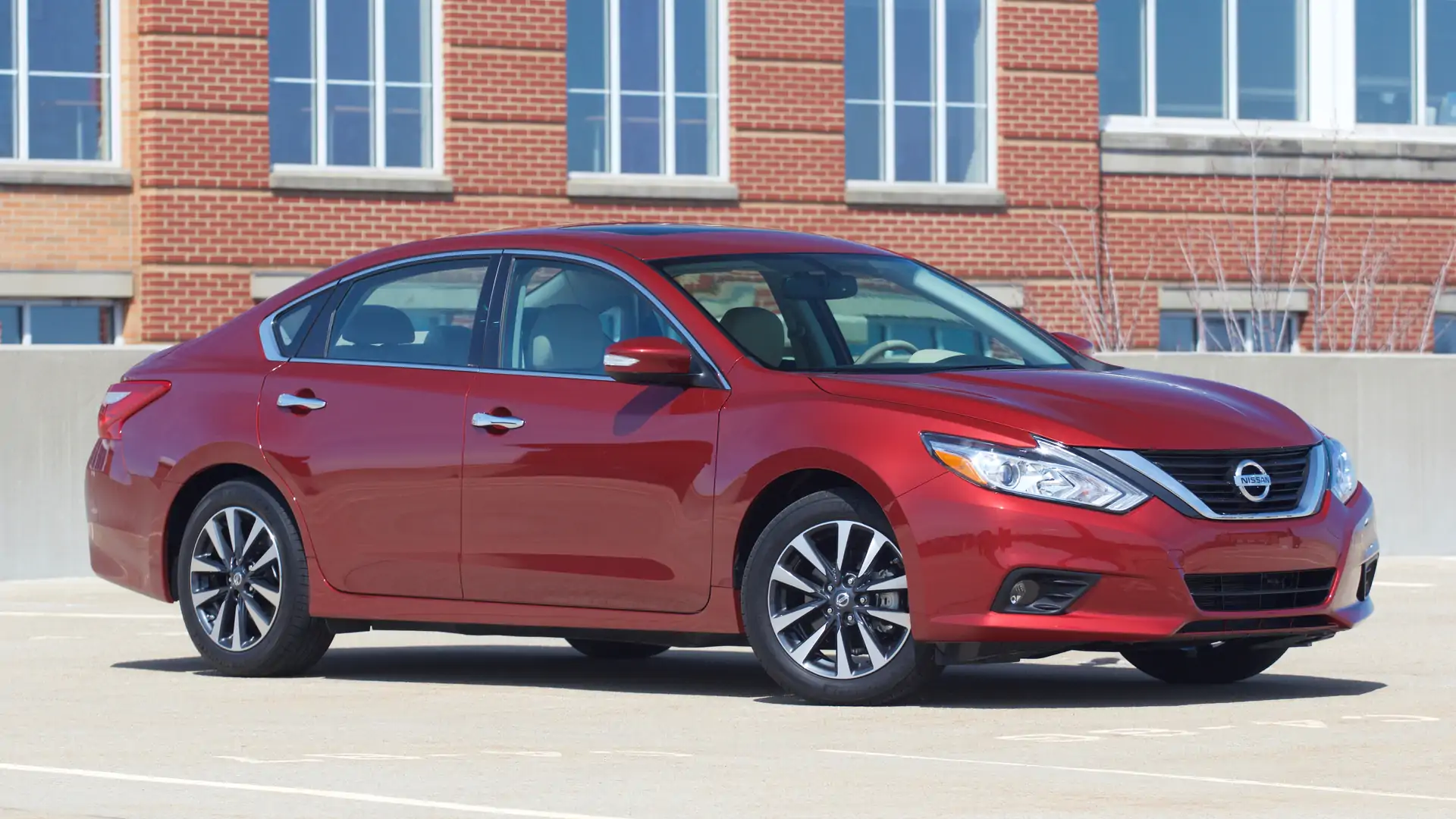
Mechanics commonly observe that these hose bursts occur within the first 50,000 to 70,000 miles, a relatively early timeframe compared to more durable cooling systems.
Replacing hoses can be labor-intensive due to the Altima’s tightly packed engine bay, especially in the V6 models where space constraints add complexity.
While routine coolant flushes and inspections are recommended, they do not always prevent hose failure in these vehicles. Many owners turn to aftermarket silicone hoses or upgraded OEM parts as a more durable solution to reduce the risk of recurring leaks.
For buyers considering a used Nissan Altima from this generation, being aware of the cooling system’s propensity for hose bursts can help avoid costly repairs and inconvenience.
Proactive maintenance and early hose replacement are critical to maintaining cooling system integrity and ensuring long-term vehicle reliability.
The cooling system is a vital component of any vehicle, responsible for maintaining optimal engine temperatures and preventing costly overheating damage.
As we’ve explored, the longevity and reliability of cooling systems can vary dramatically between makes and models, often depending on design choices, material quality, and engine layout.
On one hand, there are vehicles equipped with cooling systems that reliably endure a decade or more without significant issues, demonstrating the benefits of robust engineering, high-quality hoses, and thoughtful component placement.
These systems provide owners with peace of mind, lower maintenance costs, and fewer unexpected breakdowns.
On the other hand, some vehicles suffer from chronic cooling system woes, particularly frequent hose bursts caused by heat exposure, substandard rubber compounds, and brittle plastic fittings.
Models like the BMW X5 E70, Chrysler 200, and Ford Escape EcoBoost showcase how even well-known brands can struggle with cooling system durability when cost-cutting or design limitations compromise material longevity.
These recurring hose failures not only increase repair expenses but also pose a real risk of engine overheating and damage if the problem goes unnoticed or untreated.
The difference between these two cooling system outcomes highlights the importance of proactive maintenance and informed vehicle selection.
For owners of vehicles with known hose issues, regular inspections, timely hose replacements, and potential upgrades to aftermarket silicone components can significantly reduce the risk of sudden failures.
Meanwhile, prospective buyers should carefully research cooling system reputations, especially when considering used vehicles, to avoid models prone to costly and frequent hose problems.
Ultimately, a reliable cooling system is foundational to vehicle longevity and performance. Understanding which vehicles offer durable cooling solutions—and which may require extra vigilance—empowers owners and buyers alike to make smarter decisions.
Whether you prioritize low maintenance or are prepared to tackle hose replacements, recognizing these patterns helps protect your investment and keep your vehicle running smoothly for years to come.
Also Read: 5 Cars That Don’t Rattle on Dirt Roads and 5 That Fall Apart Instantly

